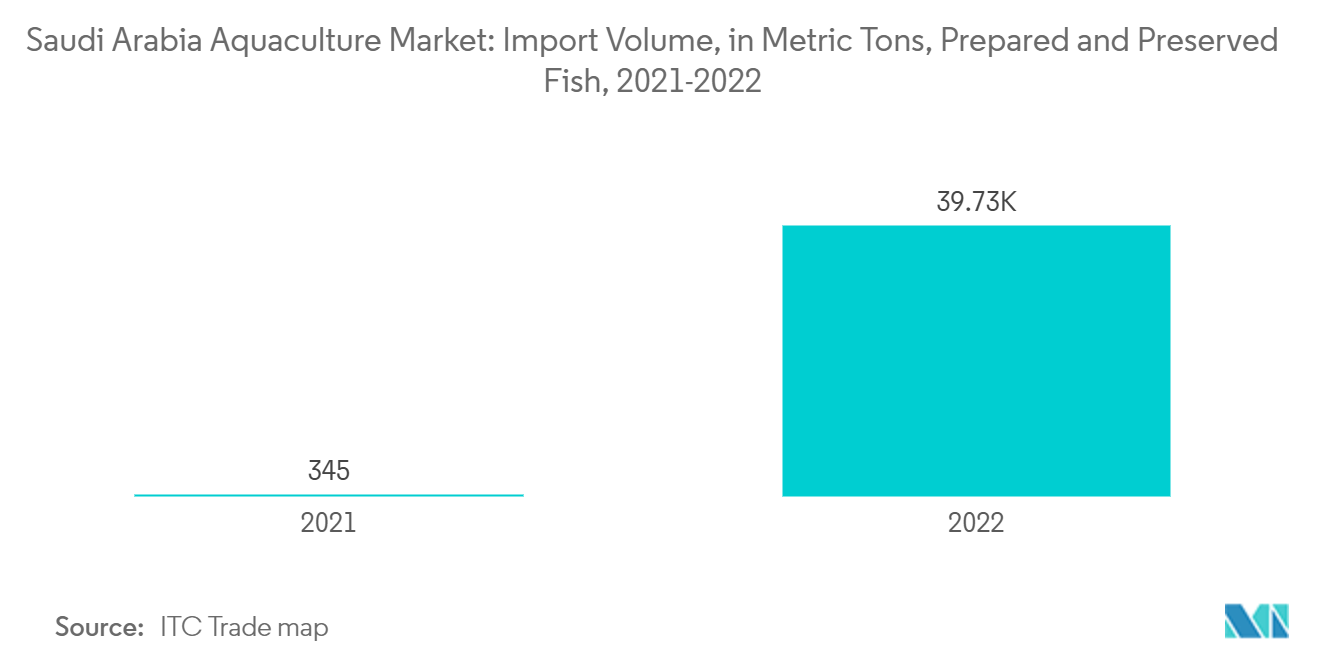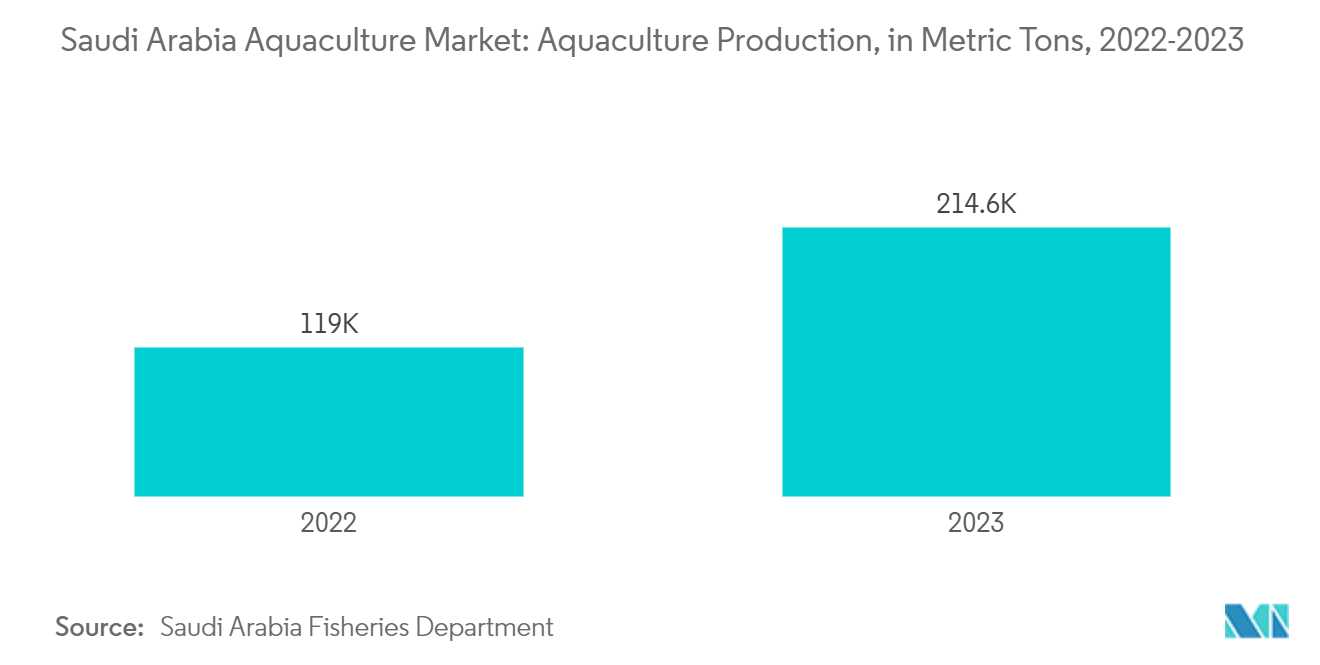Market Trends of Analysis Of Fisheries And Aquaculture Sector In Saudi Arabia
Processed Fish Segment is likely to Witness Significant Growth
The consumption of processed fish is being driven by the rising demand for aqua food because of its nutritional properties, such as the availability of superior-quality proteins, vital fatty acids, and macro- and micronutrients. The increasing working population, busy lifestyles, and companies introducing flavourful and tasty processed fish products are a few major factors supporting the growth of the processed fish segment. In addition, the expanding trend of consuming convenience foods due to busy lifestyles is influencing consumer inclination toward processed foods such as ready-to-eat and ready-to-cook fish products. This is raising the demand for imports of prepared and processed fish from different countries. For instance, according to the ITC trade map, the imports of preserved and prepared fish drastically increased from 345 metric tons in 2021 to 39,732 metric tons in 2022. This shows the rapid growth of the processed fish segment in the coming days.
Along with this, the business of processing fish in Saudi Arabia is growing because of better ways to distribute fish and process it. In 2022, Almarai, a prominent food and beverage manufacturer in Saudi Arabia, is diversifying into the seafood sector, bolstering the Kingdom's food security efforts. The initiative includes establishing state-of-the-art seafood processing facilities and introducing a range of seafood products. As a part of this, the company allocated an initial investment of USD 67.2 million. This is the projected growth of distribution channels, and improvements in canning methods will speed up the market growth of the processed food segment during the projection period.
Furthermore, the local market is witnessing a surge in consumer interest towards a wide array of processed fish varieties. These encompass cleaned fish, available in diverse forms such as raw, salted, battered, or breaded. The consumers have access to options that come with added ingredients for convenient cooking, alongside a plethora of ready-to-eat processed fish offerings. Noteworthy is the strategic approach of Saudi, which consistently is set to fuel market growth in the coming years. In 2023, the Kingdom of Saudi Arabia (KSA) broadened the roster of Russian enterprises authorized to supply fish products to their respective markets. Moreover, the Kingdom of Saudi Arabia (KSA)'s State Food and Drug Administration has recently permitted one canned fish manufacturer, bringing the total count of Russian organizations cleared to export fish products to 40 for the Kingdom. Therefore, the rising demand for processed food coupled with the expansion of the industry is aiding the market growth during the forecast period.

Growing Support from the Government
Aquaculture has become a pivotal sector in Saudi Arabia's quest to diversify its economy and bolster food security. The Saudi government has seamlessly woven aquaculture into its overarching economic and environmental strategies. Central to these efforts is the Vision 2030 initiative, which lays out a detailed roadmap for economic diversification and reduced oil dependency. Aquaculture stands at the forefront of this vision, underscoring the kingdom's dedication to food security and sustainable industry growth. Further emphasizing this commitment, in 2022, the Saudi Minister of Environment, Water, and Agriculture inaugurated the Aquatic Animal Diseases Network in Riyadh. This network aims to enhance the role of aquatic and marine animals in food production and curb disease spread, ensuring sustainable growth for the region's aquaculture business.
Despite these advancements, Saudi Arabia still relies on imports to meet its domestic seafood needs. To address this import dependency, the government has launched several initiatives aimed at boosting local seafood production. In 2024, King Abdullah University of Science and Technology (KAUST) Beacon Development, in partnership with the Saudi Ministry of Environment, Water and Agriculture (MEWA), rolled out an Aquaculture Development Program (ADP) along Saudi Arabia's coast. Targeting an annual seafood production of 280,000 metric tons by 2030, the program aims to stimulate economic growth and reduce fish import reliance. To facilitate this ambitious goal, King Abdullah University of Science and Technology (KAUST) is actively training the local workforce, enhancing skills to propel the aquaculture sector forward.
In addition to these initiatives, the Saudi government is backing aquaculture with significant financial investments and incentives, fostering growth and innovation. For example, Saudi Arabia's fisheries department, through private-sector investments, is eyeing a fish output of 230,000 metric tons by 2024. This endeavor aims to bridge the notable gap between the nation's fish supply and its demand, strengthening domestic production. These concerted efforts have borne fruit: Saudi Arabia's fisheries department reported an impressive 80% year-over-year surge in fish production for 2023, hitting 214,600 metric tons, up from 119,000 metric tons the previous year. Such robust government backing bodes well for the aquaculture sector's growth trajectory in the coming years.


